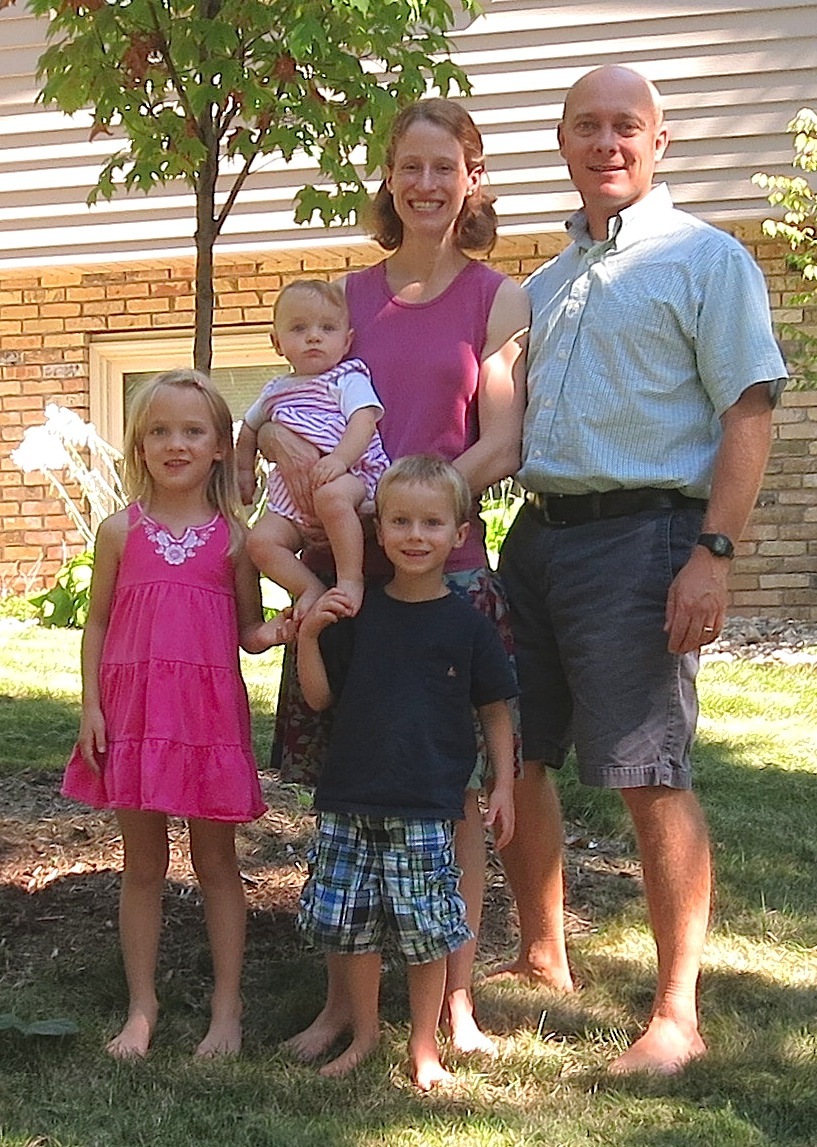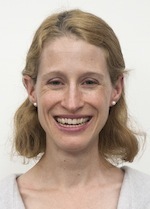UW-Madison scientist receives award to save babies, a diaper at a time

The Brenner family, including 6-year-old Ruthie, whose early birth inspired Katie Brenner’s research focus. Brenner is one of five recipients this year of the L’Oreal USA For Women in Science Fellowship.
She woke up in her hospital room feeling nothing short of desperation. Katie Brenner remembered giving birth to a tiny daughter hours earlier but the doctors and nurses had whisked the preterm infant away for care. She hadn’t seen little Ruthie since.
“I want to meet my daughter,” the normally polite Brenner demanded of the hospital staff.
Her little girl is now a healthy 6-year-old and for that, Brenner is thankful. But she knows the story ends much differently for too many families. Doing something about it has inspired her scientific career.
It also led L’Oreal USA and the American Association for the Advancement of Science to select the University of Wisconsin–Madison postdoctoral researcher as one of five female scientists in the U.S. to receive the For Women in Science Fellowship this year. The recognition — also bestowed upon scientists at Harvard University, the University of Minnesota, Stanford University and the University of Virginia — was announced today.

Katie Brenner
“I am really excited to be a part of a community of respected women scientists,” says Brenner, who is developing technology to help in the early diagnosis of illness in premature infants. Brenner is a scientist in the lab of Doug Weibel, a UW–Madison professor in the Department of Biochemistry.
Babies born prematurely are more susceptible to infection and illness than babies born full term. But by the time their illness is obvious — by virtue of symptoms like fever or vomiting — it is sometimes too late.
“They are so fragile that by the time they appear sick, they can be dead in hours or days,” says Brenner.
Diagnosing such tiny infants can also be risky, and is often as much an art as a science. A blood test may be all but impossible; drawing as little as 1/10 of a teaspoon of blood from a preemie may necessitate a transfusion.
But something all humans do — including the tiniest among us — is urinate. Brenner is taking advantage of this in her approach.
“We want to know if chemicals in the urine of preterm babies can tell us if they’re getting sick,” says Brenner. “If we can tell early on, we can get them help.”
Brenner is collaborating with nurses at Meriter Hospital in Madison to collect urine-soaked diapers from babies in the neonatal intensive care unit. The diapers are frozen and Brenner eventually extracts the urine from them (she laughs when she mentions she essentially uses a blender to do so).
“We want to know if chemicals in the urine of preterm babies can tell us if they’re getting sick. If we can tell early on, we can get them help.”
Katie Brenner
Then comes the part that has slowed things down: running the $200-apiece tests to identify what’s in the urine, which includes everything from the byproducts of food metabolism to drugs and bacterial fingerprints.
Brenner’s work has been largely unfunded as she has worked to collect enough evidence to show the approach works. She can now show it does, and with the $60,000 in funding she receives as part of her award, these costs will become easier to swallow while she looks for more support.
“We have been bootstrapping funds,” she says. “We will be able to process 150-200 samples using this money.”
That’s 200 urine samples closer to helping premature babies.
This is the first study that will fully characterize urine from both healthy and sick preemies at every gestational age and birth weight. Brenner has to determine what is “normal” in order to identify what is not.
It’s yielding a potential wealth of other information, too, such as what it looks like as a baby born to a drug addict weans off of it, or the signature left behind in the urine of babies born to mothers who smoke tobacco.
“This is a huge study and it takes time to get concrete, statistically significant results,” Brenner says. “This is why L’Oreal taking a chance on us is a blessing.”
“We have been bootstrapping funds. We will be able to process 150-200 samples using this money.”
Katie Brenner
The L’Oreal For Women In Science program began in the U.S. in 2003 and has awarded 55 female postdoctoral scientists since that time. As part of the recognition, Brenner will soon travel to Washington D.C. for a weeklong STEM-focused program that includes invitation to a roundtable discussion at the White House with female scientists in the executive branch, visits with congressional offices, the opportunity to mentor D.C.-area high school students at the Smithsonian Museum of Natural History, and more.
Brenner says her work is a team effort — involving everyone from the nurses at Meriter to the scientists at the UW–Madison Biotechnology Center who have helped her process samples. She plans to set aside some of the award money for the nurses to contribute toward their continuing education and help them become “more engaged in the research process.”
It’s this focus on education and outreach that also contributed to Brenner’s selection for the award, according to L’Oreal. Brenner and a Beaver Dam High School teacher, Melissa Hemling, worked together recently to develop a device made from everyday materials that students in Hemling’s class could use to study fluids and chemistry concepts. They published their methods this year, and Brenner visited Hemling’s classroom twice last year to work with the students.
The now mother of three has also developed another program based on her diaper study in which students can pretend to be neonatologists and diagnose diseases. She hopes to involve Oregon and Beaver Dam High Schools.
“This type of hands-on learning was really valuable in drawing me to science and engineering years ago,” Brenner says, “and I hope the experience will encourage some of the students who participate in the activities to consider it, too.”




